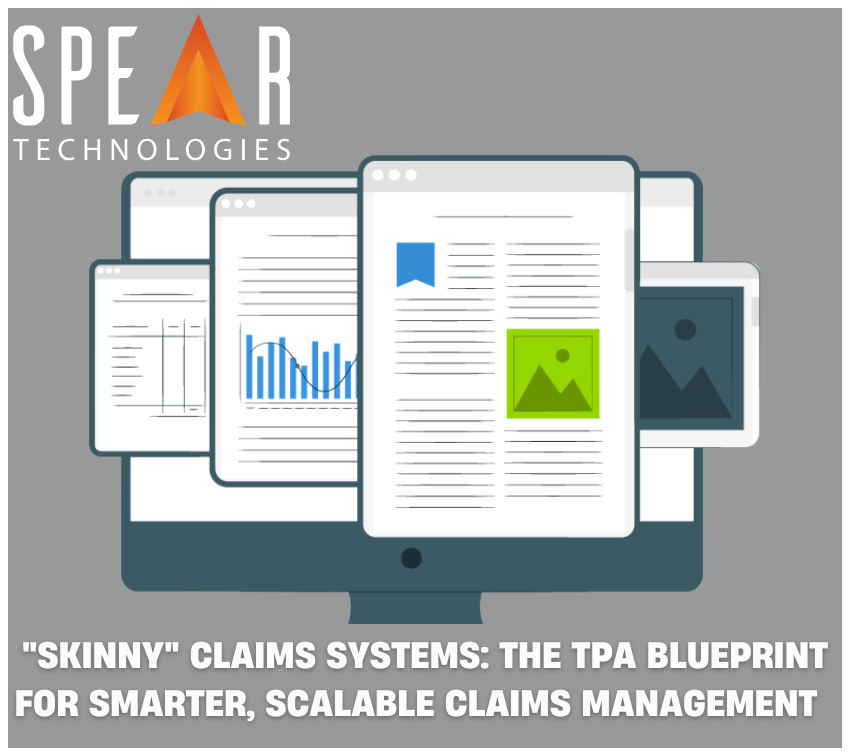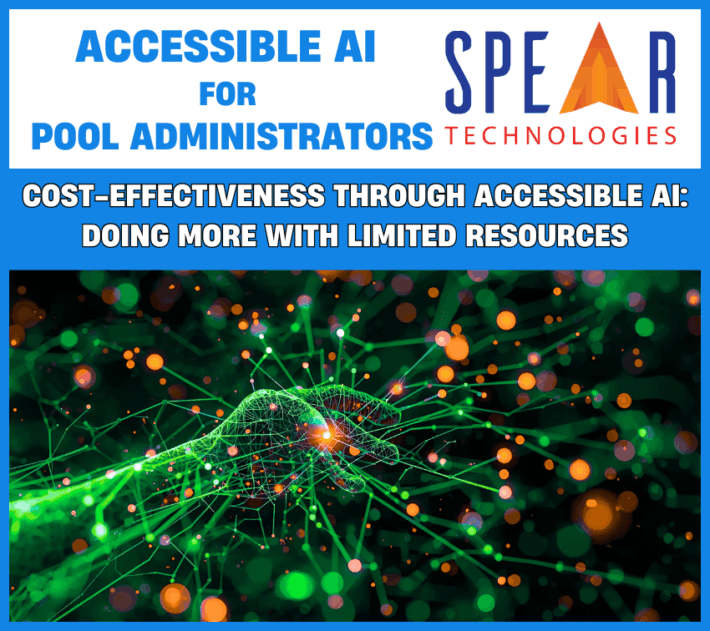“Skinny” Claims Systems: The TPA Blueprint for Smarter, Scalable Claims Management

Third-Party Administrators (TPAs) success hinges on agility, transparency, and the ability to serve diverse clients without unnecessary tech bloat. The concept of a “skinny” platform—lean, focused, and flexible—resonates deeply with claims operations that want to stay competitive and cost-effective. That’s the essence of a “skinny” claims system.
A recent article from industry analysts Datos Insights, “Skinny PAS + Underwriting Workbench = Insurance Modernization”, introduces the idea of a minimalist but powerful policy admin stack that delivers only what the business needs—not unnecessary baggage. That same thinking applies directly to Claims Management Software.
“Modern claims oversight doesn’t require a massive core system. It requires smart automation, meaningful transparency, and the ability to adapt—fast. A skinny claims system delivers exactly that.”
Let’s explore what makes a modern, efficient, and “skinny” Claims Management System especially suited for TPAs.
1. Core Claims Functions—Done Right
Skinny doesn’t mean stripped down. It means focused systems that still do the heavy lifting on claims but without the baggage.
A modern TPA system should include:
- FNOL capture (manual + digital intake)
- Claim file creation with automated data population
- Task and diary management
- Payment and reserve tracking
- Notes, attachments, and correspondence
While avoiding:
- Complex reinsurance modules
- Multi-jurisdictional excess features
- Rule engines that require heavy configuration
Legacy systems often fall short. But TPAs that leverage the right Third-Party Administration Software can stand out by aligning with these priorities—offering not just service delivery, but true partnership and performance.
2. Built-in Oversight & Transparency
Clients are increasingly tech-savvy, and their trust and compliance hinge on providing visibility. That’s why the most competitive TPAs are investing in skinny Claims Management Systems deliver:
- Configurable dashboards for internal and external stakeholders
- Comprehensive data reporting and visualization
- Real-time reporting to support Service Level Agreement (SLA) tracking and client reviews
- End-to-end audit trails and compliance documentation
- Real-time status updates
- Self-service portals for clients
No need for:
- External data warehouses
- Custom reporting timelines that take months
Oversight isn’t just a reporting requirement—it’s a competitive differentiator that helps TPAs deepen relationships with clients who demand transparency, and now a requirement for competing and winning business.
3. Modular AI and Automation—Not a Monolith
Accessible AI and claims automation software make a major impact, empowering your business users to tailor a system that suits their needs, without requiring a data science team:
- AI tools for subrogation flagging, fraud detection, and loss trend analysis
- Severity prediction and triage recommendations
- Duplicate detection and automated alerts
- Auto-generate forms, notices, and correspondence
- Rules-based workflows to eliminate bottlenecks
- Improved resolution timeframes without increased overhead
You won’t be dealing with:
- Costly, complex integrations
- Dependence on data science teams for every tweak
Automation isn’t about replacing people—it’s about letting your team focus on what matters most: serving clients effectively.
4. Low-Code / No-Code Configuration
IT bottlenecks shouldn’t stand between your team and a better process. A true Third-Party Administration platform empowers business users to:
- Modify workflows, fields, and templates
- Set rules and triggers for automation
- Customize logic for specific clients
Without relying on:
- Scripting languages
- Long vendor deployment cycles
This flexibility helps TPAs adapt to new programs, clients, and requirements in real time.
5. Open Architecture for Seamless Integration
Your clients all use different systems—your TPA platform should work with them, not against them.
Look for:
- Lightweight APIs and connectors to portals, document storage, accounting platforms, and policy systems
- Modular architecture that supports plug-and-play upgrades
- Smooth data exchange with third-party vendors and partners
Minus the drawbacks of:
- Closed systems
- “All or nothing” core platform commitments
- Rip-and-replace mandates
- Massive middleware deployments.
A truly modern Claims Management Solution supports interoperability from the start.
Why This Matters for TPAs
TPAs operate with a distinct set of challenges:
- Serving diverse clients with different reporting, compliance, and process needs
- Delivering speed, accuracy, and service while staying lean
- Proving value through transparency, efficiency, and insights
A skinny claims system helps TPAs:
- Scale without unnecessary cost or overhead
- Deliver client-ready insights without IT complexity
- Automate without losing control
- Adapt quickly to client demands and new programs
Whether your clients are public entities, self-insured groups, or private organizations, a lean, modern TPA platform positions you as a partner—not just a processor.
Final Takeaway
TPAs don’t need bloated systems or outdated tech to succeed. They need smart automation, real-time oversight, and configurability that works for their business—not against it.
SpearClaims™ is a next-generation TPA Software platform designed to help TPAs modernize their services while staying aligned with the specific needs of public clients. With capabilities like:
- AI-driven risk insights
- Workflow automation for faster resolution
- Real-time dashboards for oversight
- Multi-entity configurations for pooled programs
See how SpearClaims™ enables Organizations with a Focused, Flexible and Cost-Effective Claims System
Schedule a Demo today and discover the TPA Solution that empowers smarter claims outcomes—backed by the industry’s most advanced Claims Management Software.
Request Pricing to see how SpearClaims™ delivers the enterprise grade insights TPAs need— for a fraction of the enterprise cost



